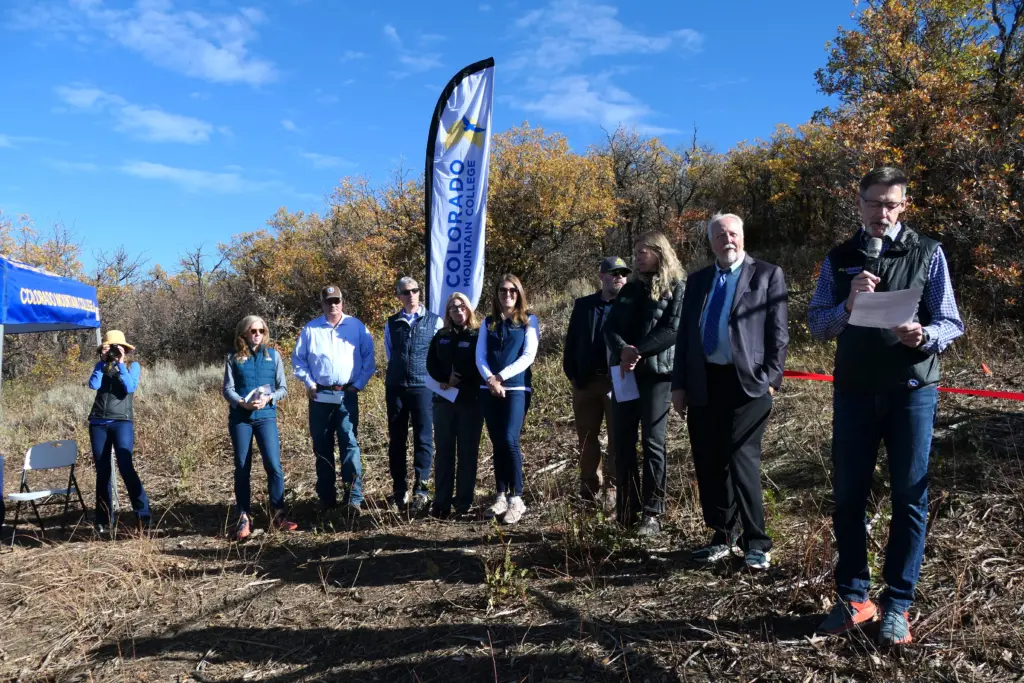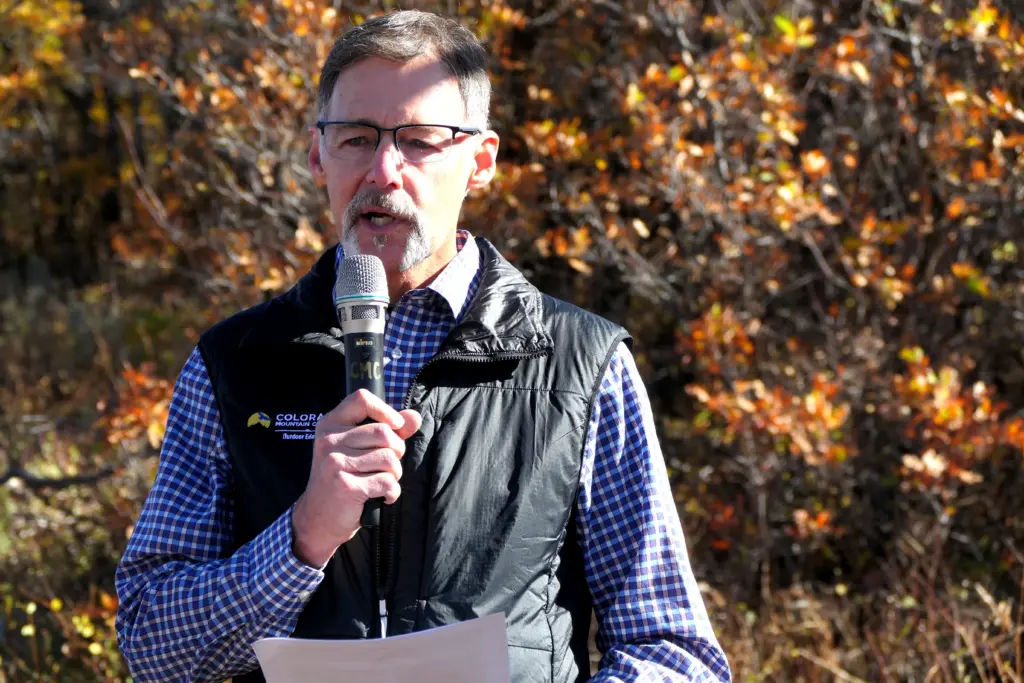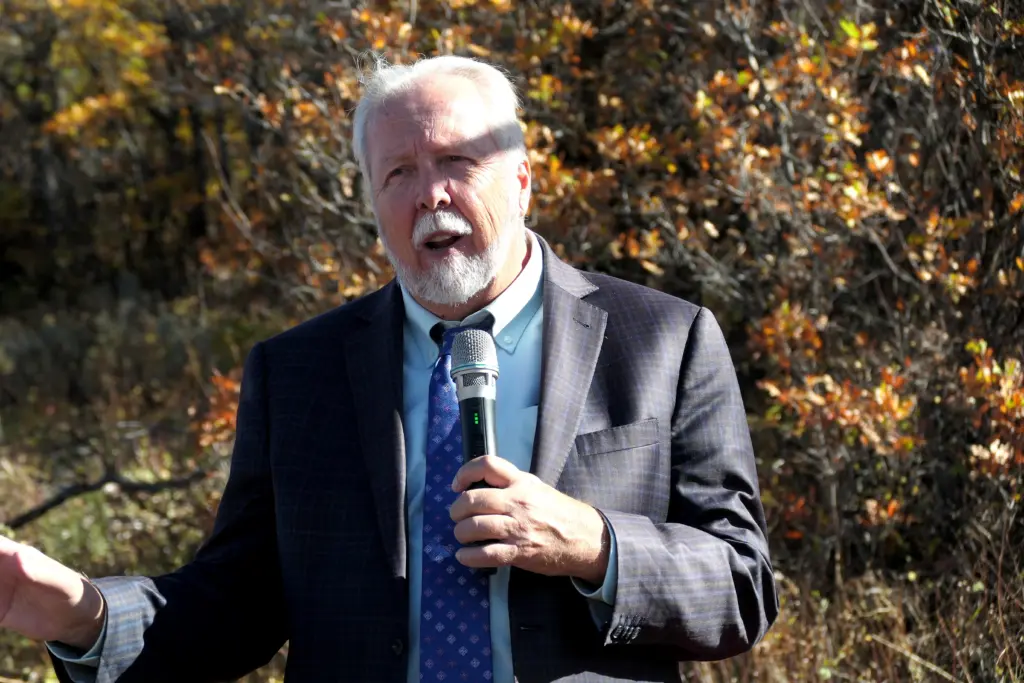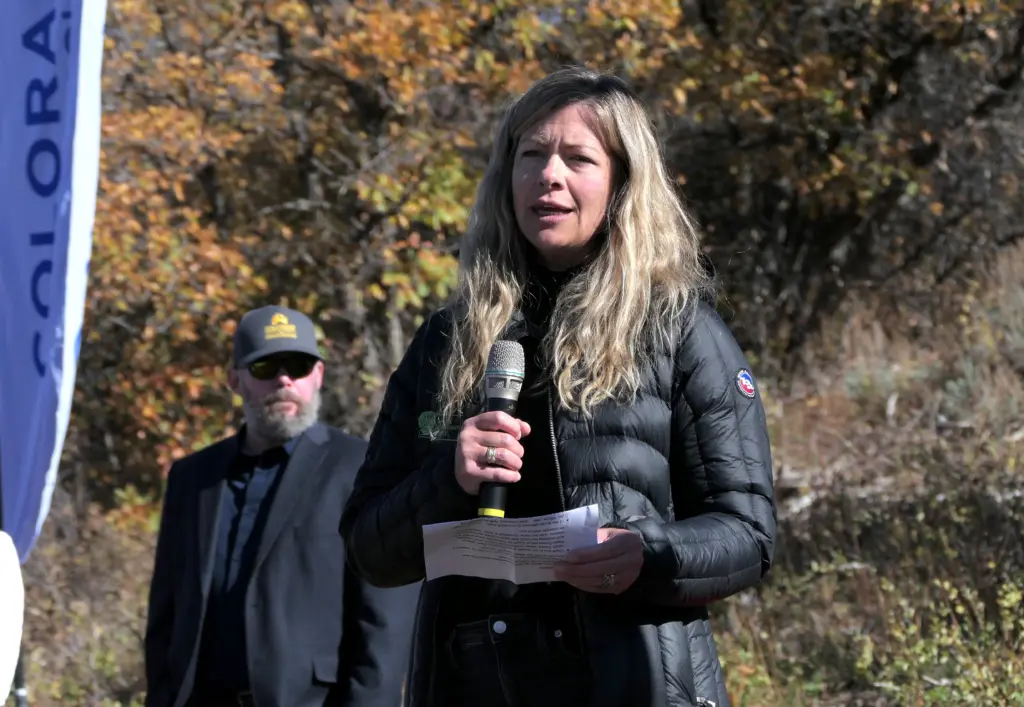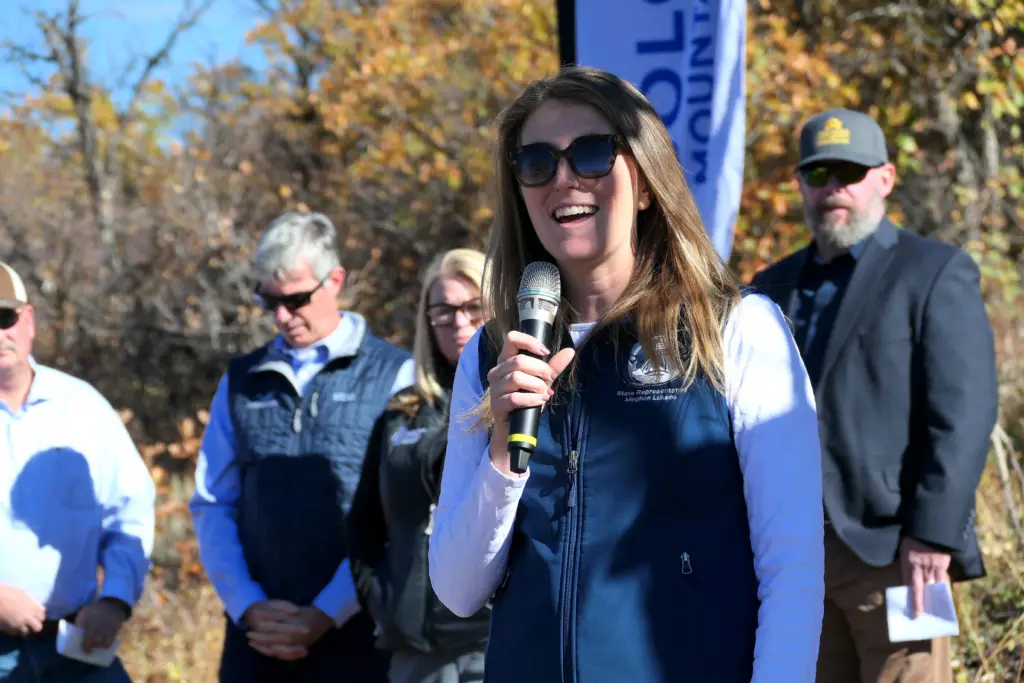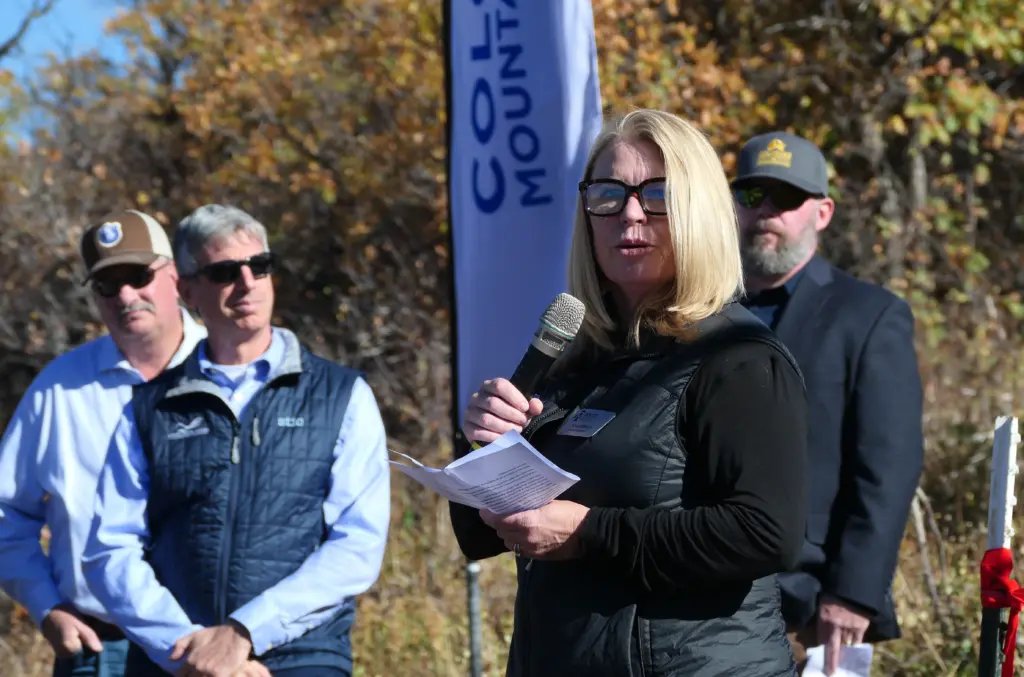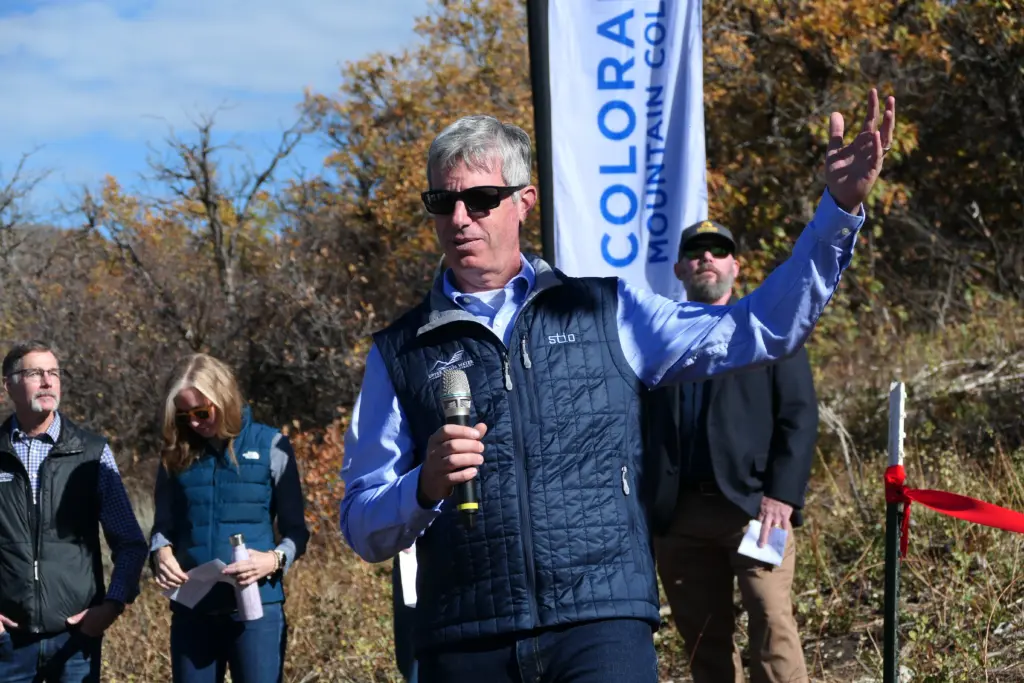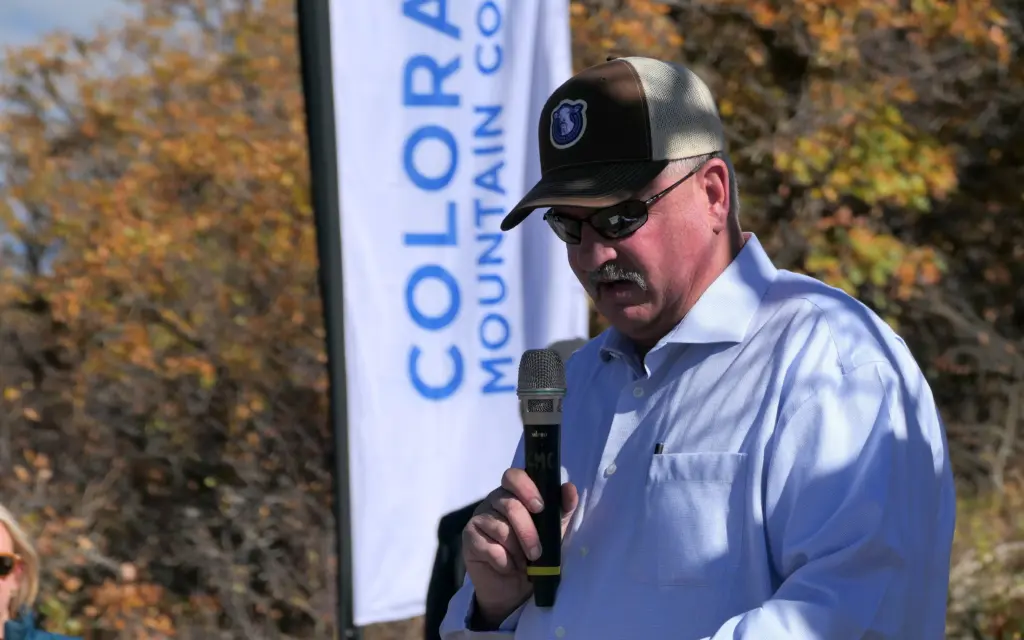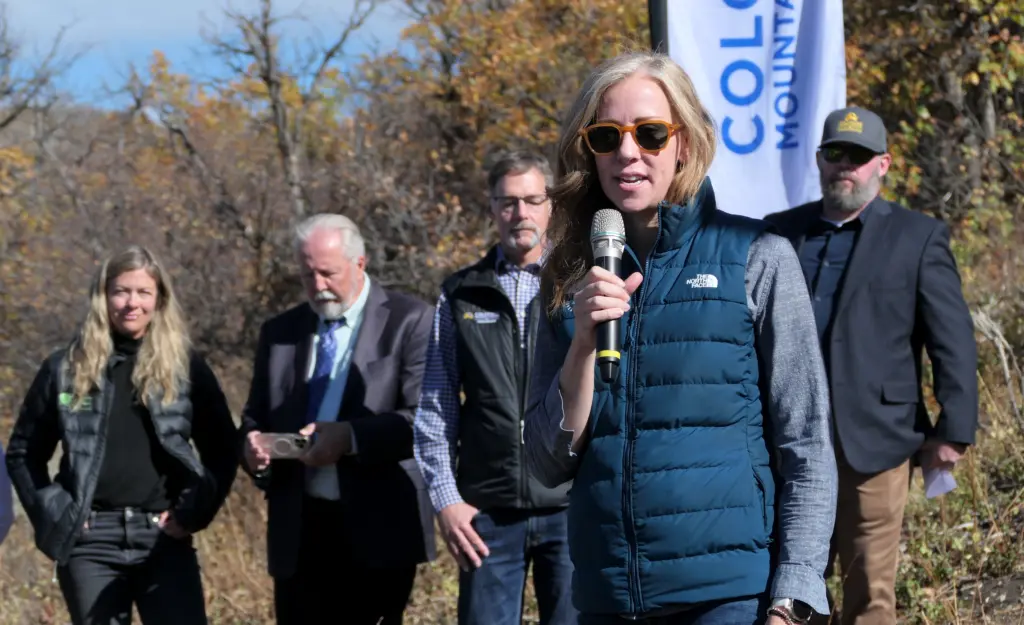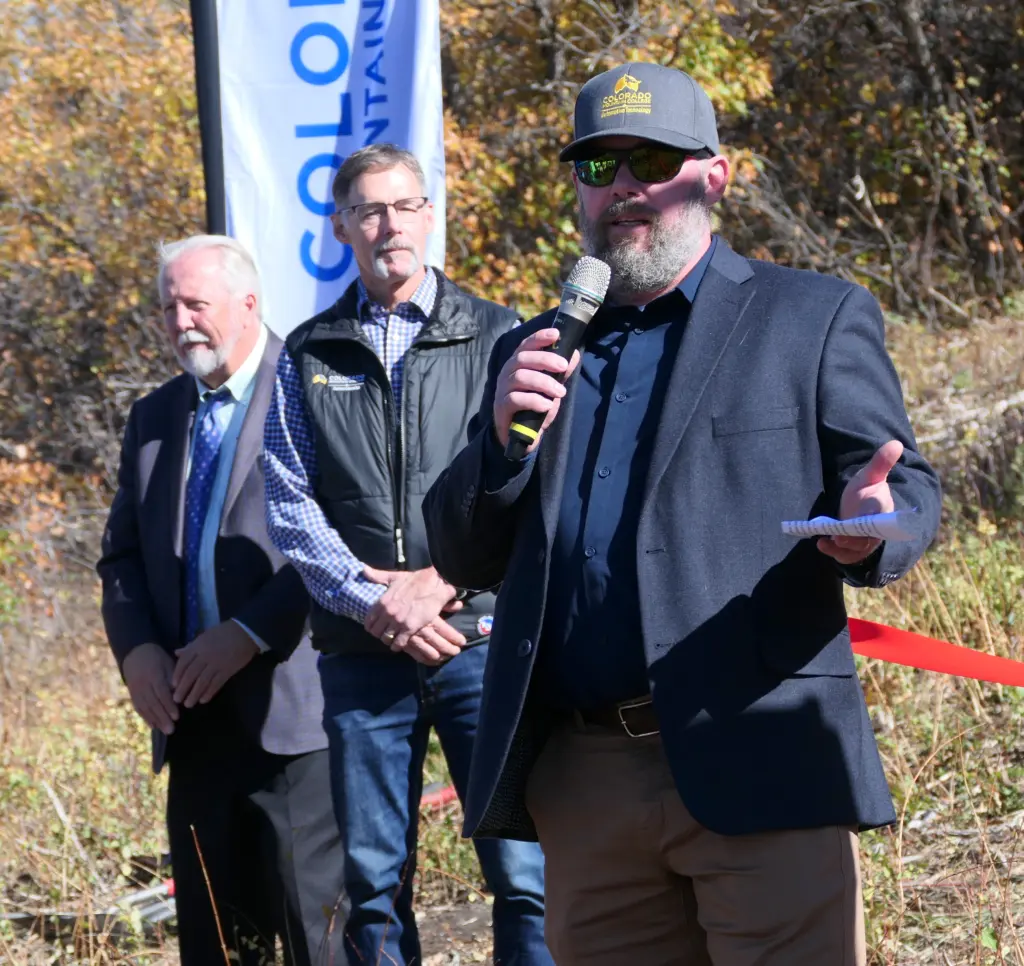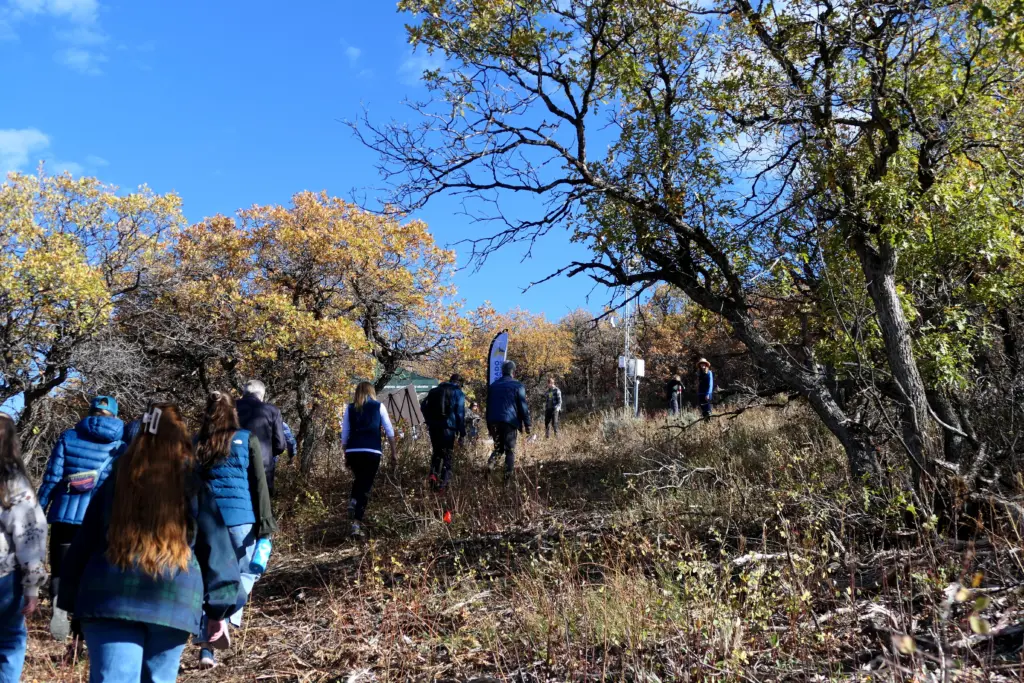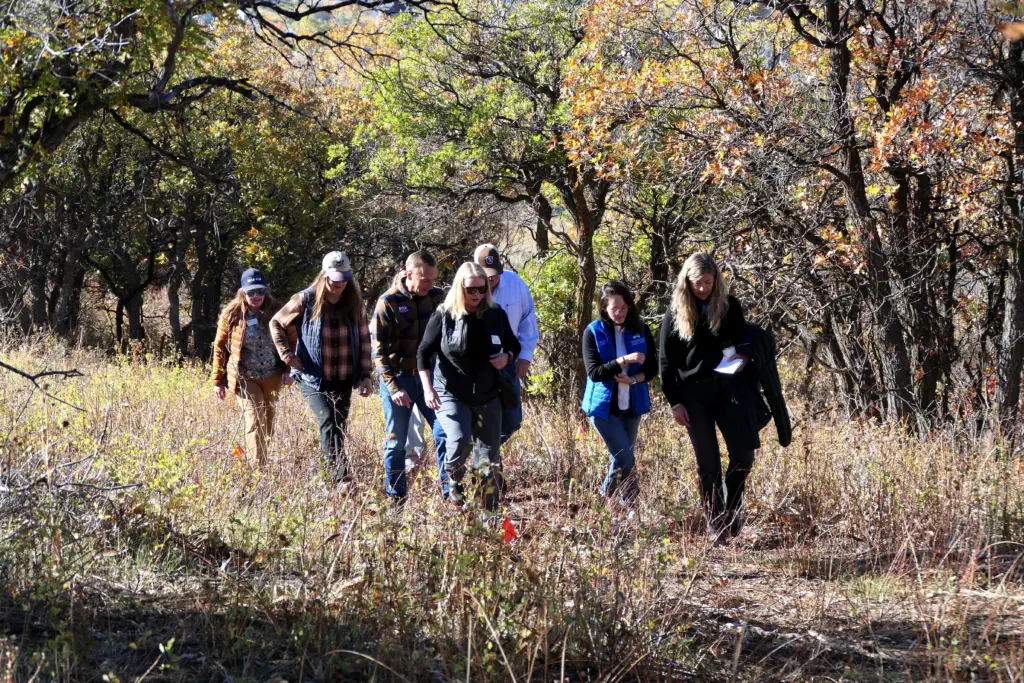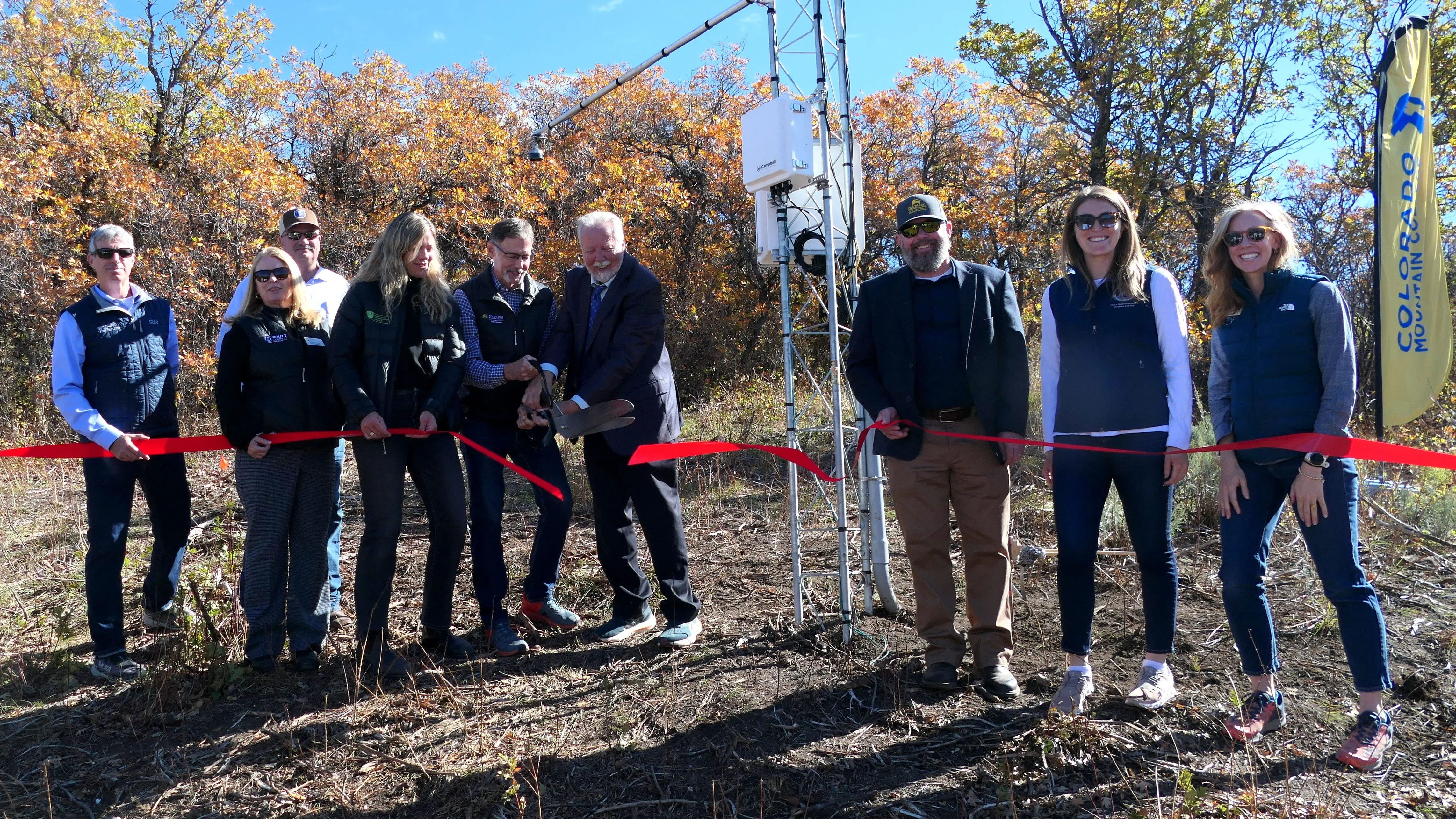
By Shannon Lukens.
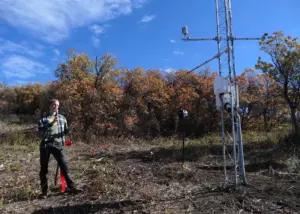
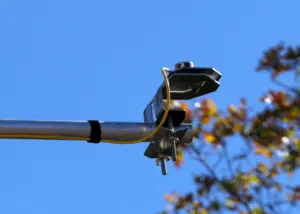
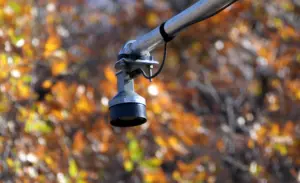
A new climate monitoring station has been installed on Woodchuck Hill, up above the campus of Colorado Mountain College in Steamboat Springs. It is part of a growing network of hydro-meteorological stations in the Yampa River Basin. There are seven now and there will eventually be 30 spanning the entire Yampa River Watershed.
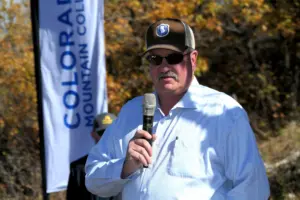
Mike Camblin was one of the speakers at the ribbon-cutting Monday. He is a Moffat County rancher from the Maybell area and also with the Colorado Water Conservation Board.
“So to me, it’s all about soil. Soil health is so important, we’re trying to build carbon in the soil, and make it healthier soil. So measuring that moisture just makes a huge difference. On our ranch we have six different stations that we check moisture with and it’s just a really good tool to tell us what’s going on underground.”
State and local leaders were also on hand for the ribbon cutting.
Other key partners included Yampa Valley Sustainability Council. Also there were representatives from the Center for Western Weather and Water Extremes, also known as CW3E, based at the Scripps Institution of Oceanography at the University of California San Diego.
“The goal of YBASIN is to establish long-term soil moisture data to better understand how dry soil conditions impact snowmelt runoff across the watershed,” said CW3E Director Marty Ralph. “As extremes continue to impact precipitation – and correspondingly spring runoff and water availability – a continuous record will support more accurate water supply forecasting and help inform critical management decisions.”
The first station was installed near Stagecoach Reservoir in 2022. Between 2023-2024, the network grew by five additional stations, one in the Trout Creek Basin, one in the lower Elk River watershed, one along the Yampa River at Carpenter Ranch near Hayden, and one in the Elkhead Creek drainage. A sixth station, known as Red Creek, was installed south of Steamboat Lake in August. Funds committed by the local Upper Yampa Water Conservancy District, Glenwood Springs-based Colorado River District, and Colorado Water Conservation Board have enabled the network’s growth to date.
Each station includes six sensors that are buried in the ground and measure the profile of soil’s moisture content and temperature at depths of 5, 10, 15, 20, 50, 100 centimeters.
Pictures from the event
